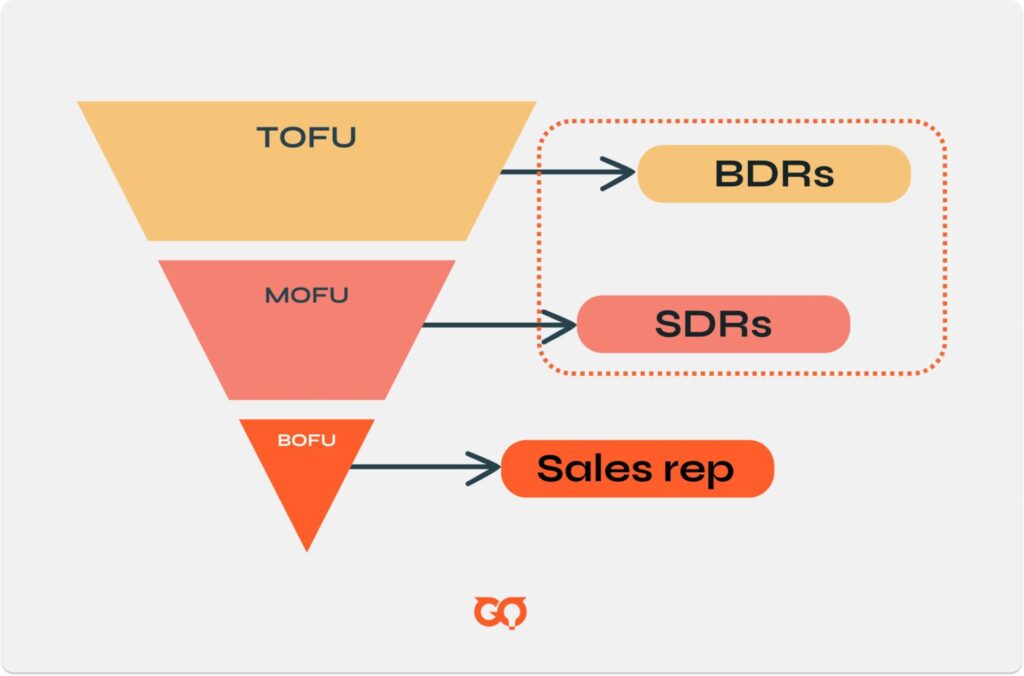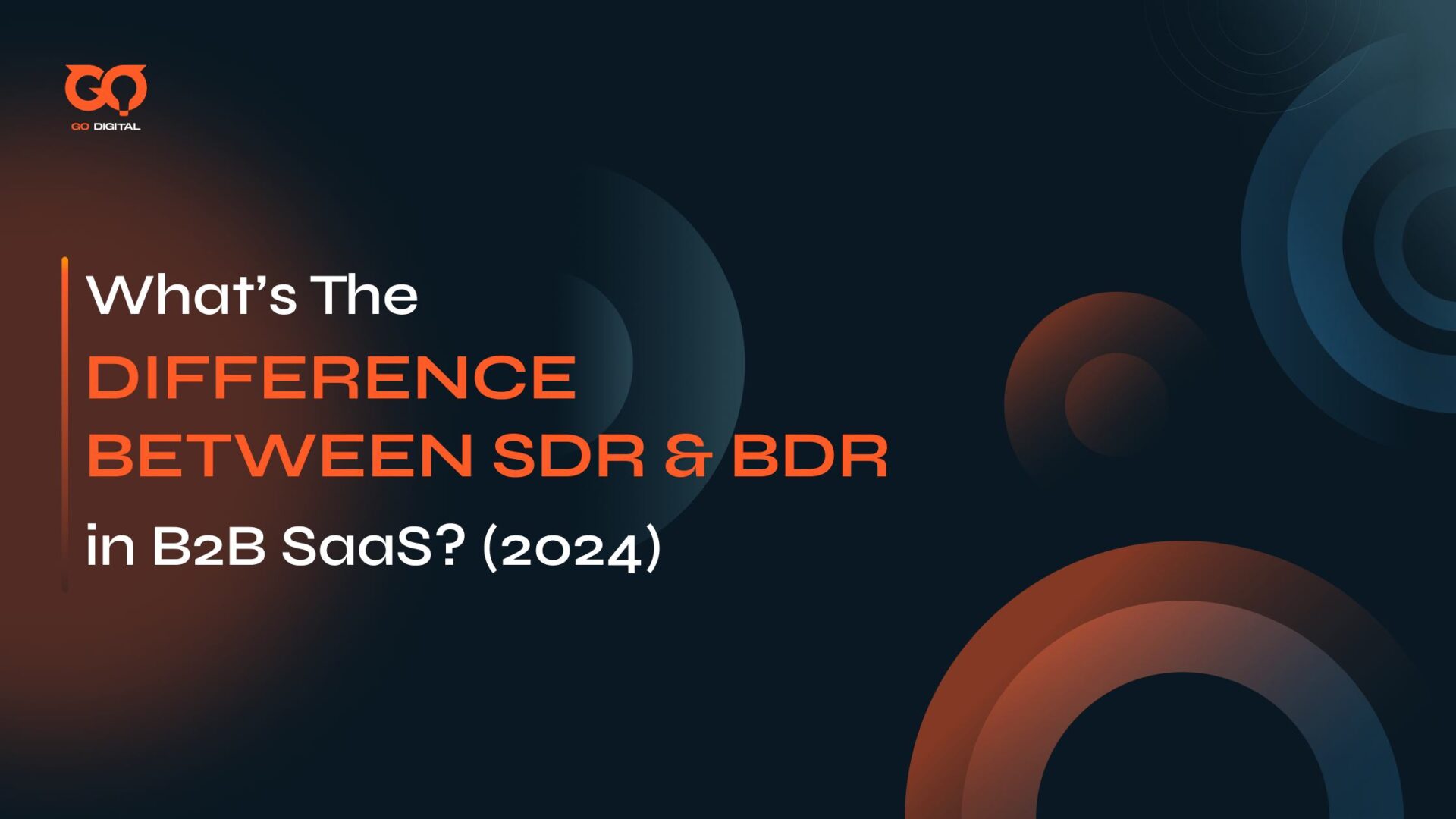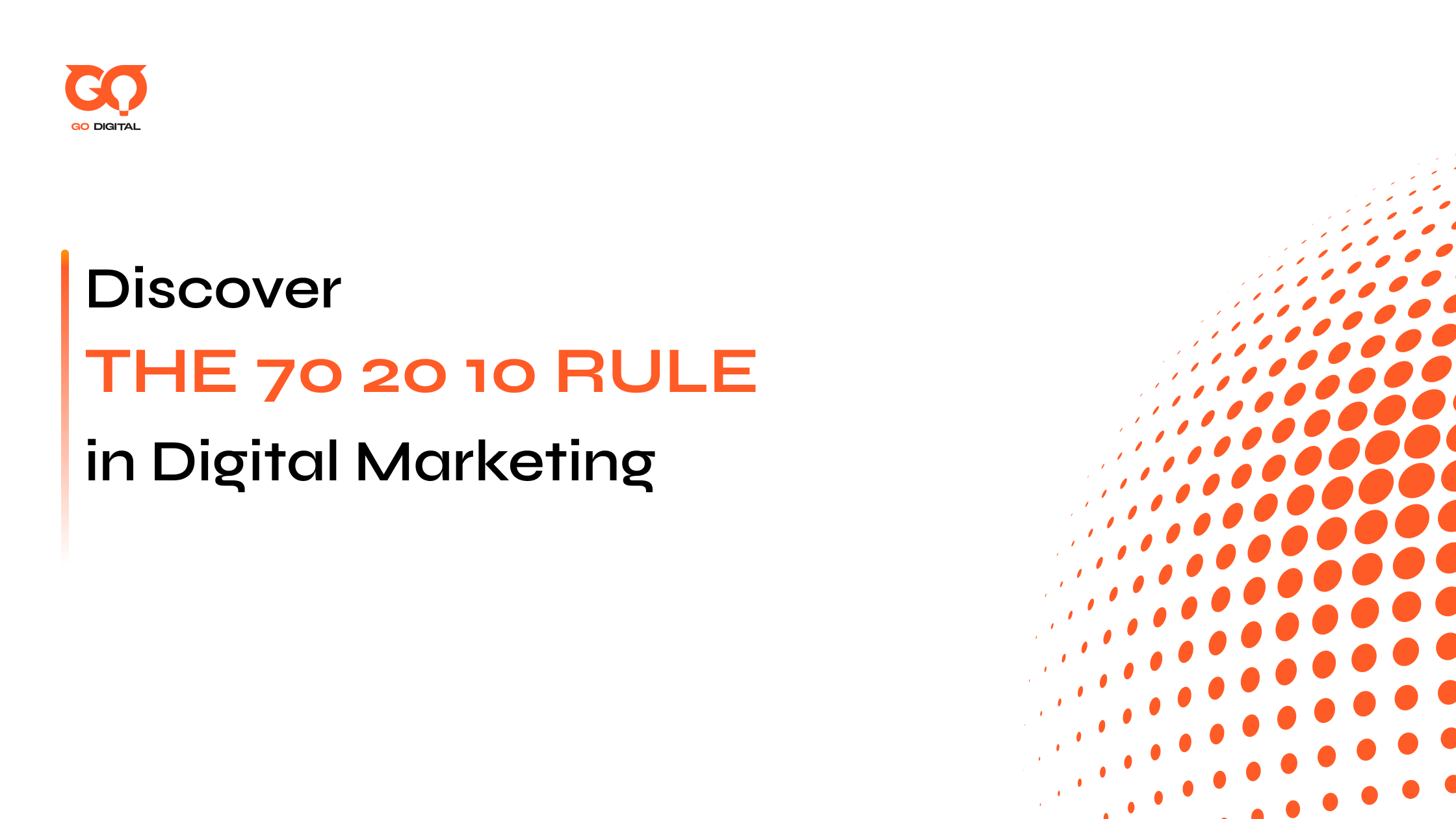As the sales landscape in B2B SaaS continues to evolve, understanding the distinct roles of SDRs (Sales Development Representatives) and BDRs (Business Development Representatives) is crucial for a high-performing team.
With field sales reps spending only 33% of their time selling (based on Spotio)—and the rest bogged down by admin work and processes—having clearly defined roles helps maximize efficiency and drive growth.
In this article, we’ll explore the difference between SDR and BDR, how each fits into your sales funnel, and why aligning these roles with your business strategy can unlock your sales potential.
Key Takeaways
- SDRs handle inbound leads, while BDRs focus on outbound prospecting.
- SDRs work mid-funnel, BDRs target the top funnel to generate new opportunities.
- SDRs are great for account management, while BDRs fit well into sales executive roles.
Sales Roles in B2B SaaS
Sales teams are typically divided into specialized roles that focus on different stages of the customer journey, allowing for a more streamlined and effective approach to building long-term business relationships.
In B2B SaaS particularly, sales roles can be defined by aligning with different stages of the sales funnel to drive growth:

- BDRs (Business Development Representatives) focus on outbound prospecting, reaching out to cold leads who may not yet be familiar with your brand. Their goal is to generate initial interest and bring new prospects into the funnel.
- SDRs (Sales Development Representatives) handle inbound leads—prospects who have shown interest by engaging with your content. They qualify these leads to ensure they are a good fit, then pass them on to the sales team.
- Sales executives and account managers are responsible for nurturing qualified leads, closing deals, and managing relationships to drive revenue growth and customer retention.
Each role plays a critical part in moving prospects through the funnel, ensuring a steady flow of leads and opportunities for the business.
💡In reality, the lines between SDRs and BDRs can blur depending on your business’s specific needs. In some cases, SDRs might handle both cold outreach and nurturing, while BDRs focus solely on qualifying leads. Conversely, a business might only use SDRs to manage all aspects of lead generation, both inbound and outbound. Ultimately, if you’re looking to understand the core difference between SDR and BDR, this article is exactly what you need.
What is SDR (Sales Development Representative)?
A Sales Development Representative (SDR) is responsible for managing inbound leads and initial prospect outreach. Their primary role is to engage with potential customers who have already expressed some interest in the product or service, typically through interactions with marketing materials, websites, or events.

What does a day in an SDR’s work life usually look like?
- Lead Qualification: SDRs qualify incoming leads to determine if they are a good fit for the product or service based on criteria like company size, budget, and needs.
- Initial Outreach: They reach out to these leads via email, phone, or LinkedIn message to start conversations, introduce the brand, and answer initial questions.
- Meeting Scheduling: Once a lead is qualified, the SDR sets up appointments or demos for the sales team to take the relationship further.
- Nurturing Leads: SDRs often nurture leads who may not be ready to buy immediately but could convert later, ensuring consistent follow-up and engagement.
They’re the link between marketing efforts and the final sales push. Their job helps smooth out the process, speed things up, and ensure that only the best qualified leads get passed on to sales executives, improving the overall efficiency of the sales team.
What is BDR (Business Development Representative)?
A Business Development Representative (BDR) is responsible for outbound lead generation in a sales team. Their main focus is identifying and reaching out to potential customers who may not be familiar with the brand.

Here’s what their everyday’s tasks typically go:
- Prospecting: Actively researching and identifying potential customers who match the company’s target market.
- Outreach: Once they find the right people, they reach out—whether through emails, cold calls, one-pagers, or social media—starting that first conversation.
- Lead Qualification: Initiating conversations to understand the prospect’s pain points and determining if they are a good fit for further engagement.
- Relationship Building: Establishing a connection with prospects to nurture long-term relationships, even if the lead isn’t immediately ready to buy.
Once they’ve done their job and a lead looks promising, they pass it on to the next person in the sales team, could be an SDR or directly to a sales rep to take things further down the funnel (depending on the organization’s structure).
Key Differencea Between SDR and BDR
1. Focus Area
SDRs focus on inbound leads—those who have already shown interest through interactions with marketing efforts like content or website visits.
BDRs concentrate on outbound efforts, reaching out to cold prospects who might not be familiar with the brand yet.
💡According to HubSpot, inbound leads have a 14.6% close rate, compared to just 1.7% for outbound leads.
2. Sales Funnel Stage
SDRs work within the middle of the sales funnel, focusing on inbound lead generation rather than cold outreach. They receive promising leads from BDRs and help move these prospects from just interest to actively engaging with the business.
On the contrary, BDRs work at the very start of the sales process, hunting new leads into the funnel and giving your sales team more opportunities to close deals. They’re essential for expanding their company’s reach and making sure the business is always growing by finding fresh prospects.
3. Lead approach
SDRs adopt a reactive approach, working with leads who have already expressed interest in your product or service through inbound sources (website forms, content downloads, or referrals).
BDRs use a proactive approach, reaching out to potential customers who might not yet be aware of your brand using cold outreach methods (cold calls, emails, and social media interactions).
4. Missions
SDRs are tasked with refining and qualifying leads that have already shown interest, which involves assessing their potential and readiness. BDRs focus on creating new opportunities, requiring them to be effective at initial outreach and relationship-building.
5. Career opportunities
Since SDRs focus on nurturing relationships and guiding leads through the sales process, they develop strong relationship management skills, which are crucial for Account Managers. AMs need to maintain and grow existing customer relationships over time, making SDR experience a good fit for this role.
BDRs thrive on hunting for new business, and this mindset transitions well to becoming an Account Executives (AE), where the goal is to close deals and secure new customers. BDRs gain confidence in handling objections, pushing for meetings, and working through resistance—key traits of successful closers.
Standard Industry Benchmarks for SDRs and BDRs
SDR Metrics
On average, SDRs are expected to make around 50-70 calls per day, with a typical response rate of 8-12%. The standard benchmark for lead-to-opportunity conversion rates for SDRs is 10-15%, depending on the industry.
Additionally, SDRs are usually measured by their monthly quota, with successful SDRs averaging 15-20 qualified meetings or demos scheduled per month.
BDR Metrics
A BDR typically sends 100-150 emails or makes 50-80 calls per day, with an email response rate of 2-5%. The standard connection rate for cold calls is around 3-5%.
BDRs generally convert 1-2% of their prospects into qualified opportunities, and they are typically tasked with generating 5-10 new opportunities per month, depending on the industry and target market.
In a nutshell:
| SDRs benchmarks | BDRs benchmarks |
| 50-70 daily calls with an 8-12% response rate. 10-15% lead-to-opportunity conversion. 15-20 qualified meetings or demos per month. |
100-150 emails or 50-80 calls per day. 2-5% email response rate and 3-5% cold call connection rate. 1-2% lead-to-opportunity conversion.5-10 new opportunities generated monthly. |
Other Sales Team Roles in SaaS
Here are the some titles of other SaaS sales team roles:
Lead Generation
- Lead Generation Specialist
- Business Development Manager (BDM)
Lead Qualification & Nurturing
- Sales Development Representative (SDR)
- Sales Engineer (SE)
Closing
- Account Executive (AE)
- Account Manager (AM)
- Customer Success Manager (CSM)
Cross-Functional Support
- Sales Operations Manager
- Revenue Operations (RevOps) Manager
Bottom Line
Understanding the difference between SDR and BDR roles is crucial for optimizing your sales team’s effectiveness. While SDRs focus on inbound leads and nurturing relationships, BDRs concentrate on outbound prospecting and generating new opportunities.
Each role plays a vital part in the sales funnel, helping drive consistent growth and ensuring a well-rounded approach to lead management. Whether you’re looking to expand your team or refine your sales strategy, aligning these roles with your business needs is key to unlocking your full sales potential.
Want to ensure your sales and marketing efforts are perfectly aligned? Our services in SEO, digital ads, and SaaS marketing can enhance your lead generation strategy and fuel business growth. Reach out today to find out how we can help streamline your sales funnel and boost conversions!
FAQs
Q1. Is BDR or SDR better?
It depends on your business goals. If you have a solid inbound marketing strategy, SDRs are likely more effective at nurturing and qualifying those leads. However, if your focus is on breaking into new markets or building strategic partnerships, BDRs might be better suited for the job.
Q2. Are BDRs and SDRs the same?
BDRs and SDRs serve different roles. BDRs focus on business development by identifying new market opportunities and building partnerships, while SDRs concentrate on qualifying inbound leads and nurturing potential customers within the sales funnel. Both are essential, but their responsibilities are distinct.







